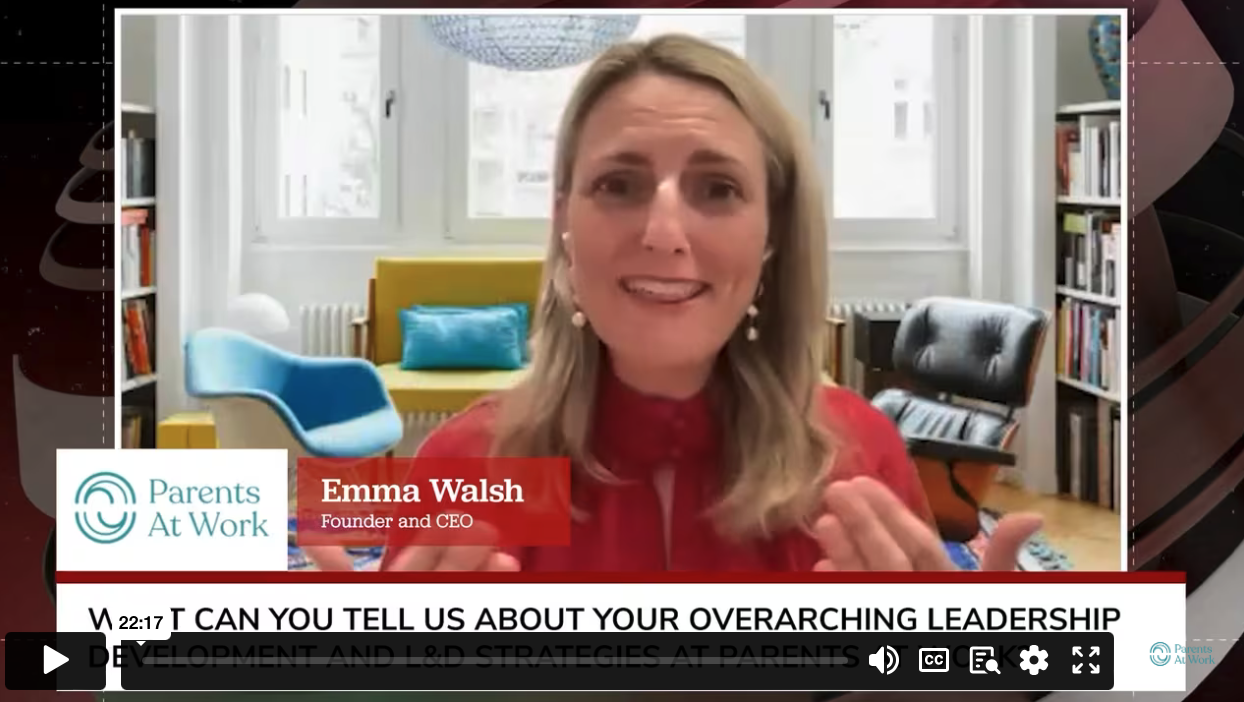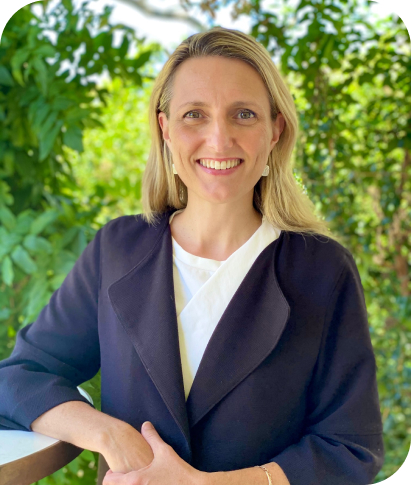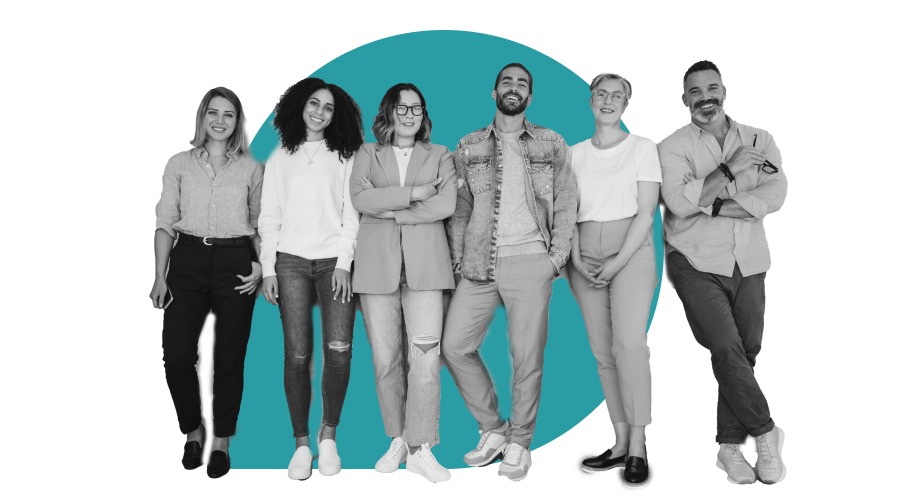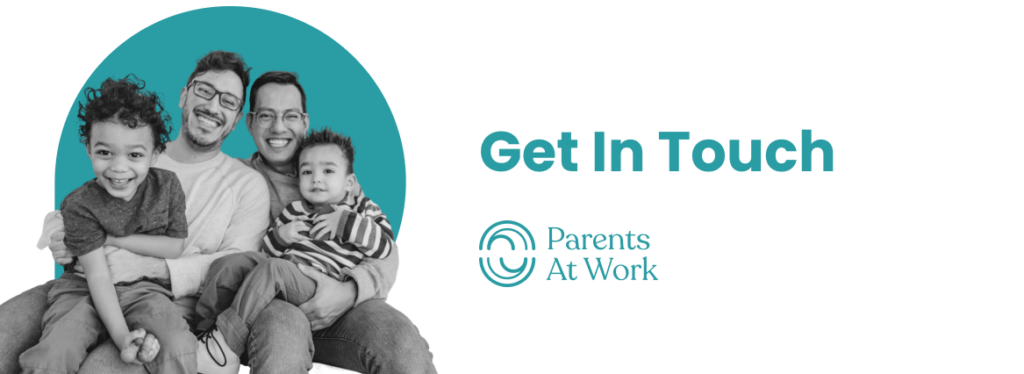
“ What’s really encouraging is the willingness of organisations to come forward. We’re always hearted to see organisation check-in via our benchmarking tool to see how they are going.”
Emma Walsh
CEO | Parents At Work
Let’s start with considering why people leave their jobs:
Are people able to have the flexibility and balance they are looking for?
What are the relationships like with teams and their leader/manager and how effectively does their leader help them thrive at work and at home?
With those key points in mind we are focused on building leadership capability in organisations to ensure leaders are equipped to manage people effectively, to not only help them be productive at their day job but also in other parts of their life.
A lot of the leadership development programs we run in organisations are directed at individual leaders but also at the leadership of HR people so that they develop the best practice policies and practices that support diversity inclusion, gender equity and all the things we know make a huge difference in how people are engaged at work. We make sure HR teams have the latest research, the latest best practice guides and everything they need to develop leading policy and practice for their organisations.
We also help individual employees self-lead, providing education tools to help them turn up and be their best self on any given day at work including resources to nurture their Career, Family and Wellbeing.
Let’s start with considering why people leave their jobs:
Are people able to have the flexibility and balance they are looking for?
What are the relationships like with teams and their leader/manager and how effectively does their leader help them thrive at work and at home?
With those key points in mind we are focused on building leadership capability in organisations to ensure leaders are equipped to manage people effectively, to not only help them be productive at their day job but also in other parts of their life.
A lot of the leadership development programs we run in organisations are directed at individual leaders but also at the leadership of HR people so that they develop the best practice policies and practices that support diversity inclusion, gender equity and all the things we know make a huge difference in how people are engaged at work. We make sure HR teams have the latest research, the latest best practice guides and everything they need to develop leading policy and practice for their organisations.
We also help individual employees self-lead, providing education tools to help them turn up and be their best self on any given day at work including resources to nurture their Career, Family and Wellbeing.
What’s really encouraging is the willingness of organisations to come forward. We’re always hearted to see organisation check-in via our benchmarking tool to see how they are going.
A real turning point from Covid is that what we do and why we do it really impacts organisations of every size.
What we look at is how we can help organisations with quick wins, how they can put an action plan together over time that they can commit to and breaking it down into key pillars that we know can make a big difference.
The biggest challenge is a cultural and social one. Tackling the problems of work life imbalance, gender inequality, flexibility, work life conflict, are all big system problems. Our biggest challenge is how do we demonstrate that by getting an organisation to invest in what it means to be family-friendly will have a ripple effect.
We know the payback of having a family-friendly culture is huge. We know there’s:
How do we bust the myth that being a family-friendly employer is not just a nice thing to do? The societal payback as well as the business payback is significant.
We know there’s:
It’s rare to find something to deliver on a number of fronts.
So showing the return on investment is what we’ve needed to prove.
Often when we think about family-friendly we can have a bias as it’s seen as something only for women, or mothers and children or organisations that are a bit ‘soft’ and not serious about their bottom line.

We are constantly looking at what’s coming down the line, looking at what the future of work tells us and what the research tells us about what people are needing to inform how work will be done, what they need from leaders and so on.
Often what is underestimated is the voice of the employee and how they are involved in the ongoing future of work design that happens in an organisation. Sometimes HR practitioners feel a deep sense of responsibility to have all the answers and to be seen to have that knowledge to hand, presenting that to an organisation once they’ve put a whole lot of blood, sweat and tears into it of their own work. What’s sometimes missed is ‘how can I tap into our employees now’.
HR teams should ask: “If I’m going to design a new policy for a leadership program etc that needs to deliver ‘X’ for our organisation and our employees are the beneficiaries of that, how do we get them in a room and talk about what our vision is and what we want to improve.” We need to make employees a customer stakeholder group from the get-go not just keep them as the end recipient.
When we are designing HR policies, practices and leadership programs, we really could do a much better job at getting the voice of the employee up and centre in the conversation to be part of the overall design.
For more information about the Inclusive Leadership Program contact info@parentsatwork.com.au or download a brochure here.
Parents At Work acknowledge and pay respect to the past, present and future Traditional Custodians and Elders of this nation and the continuation of cultural, spiritual and educational practices of Aboriginal and Torres Strait Islander peoples.


